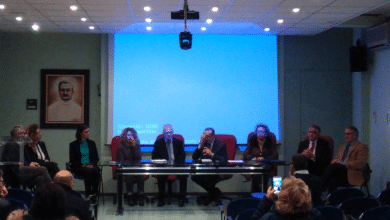
Rome, July 10. (AdnKronos Salute) – Almost a third of the Italian population (31%) must regularly use, throughout the year, medicines prescribed by a doctor, with higher percentages for women (32.5%) than for men (29 ,5%). This was highlighted by the 2013 Istat survey on health in Italy presented today in Rome. the over eighty. In general, 48.6% of the interviewees took drugs in the two weeks preceding the survey. Already starting from childhood, one in 5 children takes medicines, with prevalence growing to over 90% around the age of 80.
Full text pdf 1mb
ISTAT. Health protection and access to care
Italy is an aging population, in which chronic diseases are increasingly common. Compared to 2005, chronic respiratory diseases and osteoarthritis are decreasing – the aging population comes from ever healthier life experiences – while malignant tumors, Alzheimer's and senile dementia are on the rise, also because there is a greater ability to recognize diseases.
Physical health improves, mental health worsens compared to 2005: the latter decreases on average by 1.6 points (71.8 controlled by age), especially among young people up to 34 years of age (-2.7 points) , especially males, and among adults aged 45-54 (-2.6). An even more significant drop is recorded in the mental health index of foreign people residing in Italy; the index decreases by an average of 4.7 points, but among foreign women the decrease is 5.4 points.
Depression is the most widespread mental health problem and the most sensitive to the impact of the crisis: it affects about 2.6 million individuals (4.3%), with double prevalence among women than men in all age groups.
The share of people with functional limitations continues to decrease, from 6.1% in 2000 to 5.5 % in 2013. It is estimated that there are over 3 million people, of whom over 80% are elderly and two thirds are women. In the South and in the Islands the share remains significantly higher than in the other territorial areas.
Families with at least one person with functional limitations are 11%; of these, fewer than 20% receive public home care. Considering also those who make up for this shortcoming by resorting to paid private services, there are still more than 70 % who do not use any type of home care, either private or public.
Heavy smokers decreased, but the percentage of adolescents and young women who started smoking before the age of 14 increased, going from 7.6% to 10.5%. 11.2% of adults is obese, an increase compared to both 2000 (they were 9.5%) and 2005 (10%). In 2013, only 20.6% of the population aged 5 and over practiced physical activity considered protective for health according to the WHO definition: 25.9% among men and 15.6% among women.
The prevention of female cancers has increased compared to 2005, thanks to the diffusion of public screening programmes. The percentage of women aged 25 and over who underwent mammography rose from 43.7% to 54.5% while 73.6% underwent a pap test, with a clear increase compared to 2005 (+9 percentage points). The greatest increases are recorded among women over the age of 65 and also concern the less educated segments of the population and those residing in the South. Female prevention also increases among foreign women, who however do not close the gap compared to Italian women.
The number of people who resort to specialist medical visits, excluding dental ones, increase (11.9% in 2005 and 14.8% in 2013) and visits to the dentist decrease by 30%.
The use of unconventional therapies has halved compared to 2000, from 15.8% to 8.2%. The use of homeopathic remedies drops from 7% to 4.1% between 2005 and 2013.
The level of satisfaction with public health services is high among those who have used them (about 8 on a scale from 1 to 10).
The social inequalities in health, in unhealthy behaviors, in the limitations of access to health services remain unchanged. The disadvantage remains in the South with respect to all the dimensions considered.
The results of the survey "Health conditions and recourse to health services", conducted between 2012 and 2013, offer an important contribution to understanding whether, more than seven years after the previous edition and in a period of unfavorable economic health conditions have worsened or improved, the methods of access to health services have changed, health protection behaviors have changed and to what extent the regional or socio-economic differentials already recorded in the past persist. The survey was carried out with the support of the Ministry of Health and the Regions, of which the Piedmont Region is the lead partner, to produce estimates at a regional and sub-regional level.
For information
Central Directorate of socio-demographic and environmental statistics
Lydia Gargiulo
phone: 06 46737251
gargiulo@istat.it
TO





